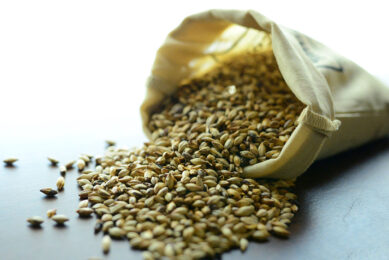Fewer Fusarium toxins in Europe this year? Not necessarily!

Many are wondering whether the mycotoxin threat to livestock will reach the extremes seen in 2014. A drier summer this year means a different, but not necessarily less dangerous, risk to animal production. Climate change may be a factor.
Remarkably high contamination with Fusarium mycotoxins, deoxynivalenol and zearalenone, in the 2014 corn (maize) harvest led to impaired feed intake and overall poor performance in livestock animals fed contaminated feed. The overall poor corn quality—especially in Central and Southern Europe—raised the industry’s awareness as to the importance of monitoring fungal toxins and mycotoxin risk management.
Greater scrutiny of 2015 harvest
With this year’s generally drier and warmer summer, expectations formed that the overall mycotoxin challenge may be lower. Mycotoxin analysis tools were applied even more intensively than in previous years, especially at early harvest season. Initial BIOMIN Mycotoxin Survey results indicate that while the prevalence of deoxynivalenol and zearalenone has declined, the prevalence of fumonisins has spiked. Over 200 European corn samples were sourced from September to November 2015 for the occurrence of the major mycotoxins in terms of agricultural production. Results displayed here focus on deoxynivalenol (DON), zearalenone (ZEN) and fumonisins (FUM) for Central and Southern Europe—shown Tables 1 and 2, respectively.
Central Europe
In Central Europe, the most common mycotoxin is again deoxynivalenol, occurring in 83% of samples tested, though the average concentration level of 1014 parts per billion (ppb) is 66% lower than in 2014. Zearalenone occurrence also decreased in general, though fumonisins increased compared to 2014, being detected in half of all samples at average of 1045 ppb.
Southern Europe
Fumonisins claim the top spot in Southern Europe in 2015, occurring in a remarkable 95% of all corn samples at 2320 ppb on average—both figures being considerably higher than in 2014. Deoxynivalenol remains a concern since 55% of samples were contaminated with an average 942 ppb. Zearalenone is present in one out of every four corn samples tested. Furthermore, aflatoxin levels also rose in Southern Europe from 2014 to 2015, with 42% of positive samples and average concentrations of 14 ppb. Across the whole of Europe, aflatoxin was detected in 21% of samples tested.

Fusarium verticillioides is the causal agent of kernel and ear rot of maize. This destructive disease occurs virtually everywhere that maize is grown worldwide.
Climate change and mycotoxins
In a new book, Climate Change and Mycotoxins, to which BIOMIN and ERBER Group authors contributed Chapter 7 on climate change impacts on mycotoxin production, the influence of extreme weather conditions on fungal patterns and mycotoxins was examined. One result of climate change, high temperatures, would favour the growth of the fumonisin producer Fusarium verticillioides compared to other maize-borne Fusarium species. As the recent European data show, the fumonisins challenge that had been largely limited to Southern Europe in past years has spread to Central Europe in 2015, leading local Central European feed associations in places like in Switzerland to warn members about the high occurrence of fumonisins.
Threats to livestock
Determining the mycotoxin challenge to livestock production depends on a number of variables, including species, animal age, health and farm conditions—not to mention the particular mycotoxins present in feed. As recently discussed, low levels of mycotoxin contaminations can have a negative impact on the gastrointestinal tract, animals’ first line of defence that is key to overall health and performance. This harvest data for Central and Southern Europe reveals a high risk to pigs (especially due to fumonisins), and a lower but not negligible risk to poultry and ruminants. Of course, monitoring feed for mycotoxin contamination and identifying the specific threat on the farm is an essential part of protecting animals and maintaining profitable production.
Join 26,000+ subscribers
Subscribe to our newsletter to stay updated about all the need-to-know content in the feed sector, three times a week. Beheer
Beheer









 WP Admin
WP Admin  Bewerk bericht
Bewerk bericht